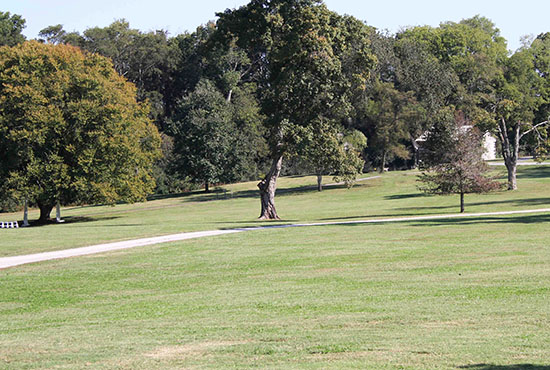Issue 15, August 31, 2015
Fall Turf Management
Fall is the start of the year for cool-season grasses.
That statement may seem strange since most professionals either view January 1 or sometime in April as the start of the growing year. That's when everything starts to grow, coming out of winter's dormancy and bursting forth with massive growth.
Most of the plants grown in Illinois could be classified as warm-season annuals, biennials, or perennials, and herbaceous or woody, and thrive during the warmth of May through August. Cool-season grasses, such as Kentucky bluegrass, perennial ryegrass and tall fescue are the exceptions. Sure, they green up quickly and have lush growth in the spring, but that can be misleading.
By the nature of the term, "cool-season" grasses thrive when the temperatures are cool. This year's mostly cool and moist conditions have allowed them to thrive during the summer, albeit with a stronger disease presence.
Let's look at why fall should be considered the start of the cool-season calendar. From September 1 through May you have nine months of potential growth, with roots growing as long as the ground isn't frozen. Normally in June through August, the plant goes dormant due to the heat. So you have nine months to get the grass in top shape to withstand the 3 months when it's the most stressed.

Turf and trees in fall.
Remember, cool-season turfgrass root growth occurs between 32°F. and 65-70°F. Anything that promotes root growth correlates to a stronger root system to survive droughts. Top growth occurs between 55° F. and 75°. Looking at the calendar, you can see that for most of the fall and early spring, both the shoots and roots will grow.
If you think March or April is the start of the lawn care season, you have two to three months of growing conditions before the turf is hit with summer's conditions. So which is better for the turf – two or three months of growth or nine months? The answer is nine months.
The list of cool-season turf practices done in September encompasses just about everything except crabgrass control. The list includes aeration/core-cultivating (to loosen the soil and stimulate root growth), dethatching, seeding, sodding, fertilizing, and even some broadleaf perennial weed control, as the weeds will translocate most of the herbicides to the roots as they move food from the leaves to the roots.
Fall seeding and sodding usually produces the most weed-free turf. Few weeds germinate in late summer-early fall so there is practically no competition as the turf becomes established and fills in.
None of these activities, though, succeed well without moisture. It's tough to aerate when the ground is like concrete. Seeds won't germinate without water and sod won't root without it. Fertilizer won't benefit the lawn without moisture. Make sure the soil has been thoroughly watered a couple of days beforehand. (David Robson)
Author:
David Robson